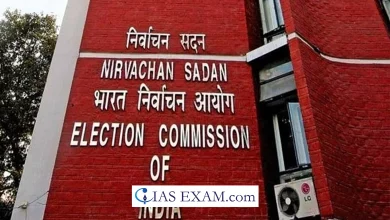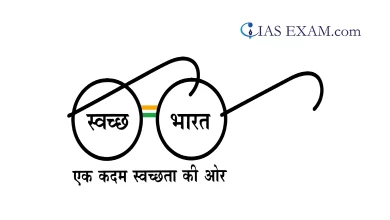Rising Interests Rates and its Impacts on GDP
[GS Paper 3 – Indian Economy, Effects of LPG Reforms on the Economy]
Context – Earlier in the year, the World Bank had noted that the downfall in India’s GDP growth to 6.5% for 2022-23 was largely due to a deteriorating global scenario and even at this rate, India will still be a global growth out-performer this year.
About GDP
- Gross Domestic Product or the GDP is the value of all final goods and services produced by the normal residents as well as non-residents in the domestic territory of the country but does not include Net Factor Income from Abroad (NFIA).
- The significant thing is whatever is produced in India, whether by an Indian or foreign national is part of Indian GDP. The GDP of any country can be calculated as follows –
GDP = Consumption + Gross Private Investment + Government Expenditure + Net Exports, (where Net Exports= Exports – Imports).
- India’s Economy stands at $3.53 trillion in FY22 whereas the GDP grew 8.7% in FY22.
- The country has recently overtaken Britain to become the world’s fifth largest economy and as per IMF projections, only USA, China, Japan, and Germany in terms of the volume of the national economy are now ahead of India.
- According to the estimates, India would become a $3.54 trillion economy at the end of 2022 compared to the UK’s $3.38 trillion. The country’s economy has been growing at a much faster rate in both real and nominal rates than that of the UK over a long period of time.
Examination of GDP growth data for India
- India’s growth trajectory: The country’s growth wheel is in sync with the other advanced economies. It means, India cannot avoid the short-term pain of deceleration in the developed countries. This effect is accentuated by the increasing global connectivity.
- Divergent Rate of GDP Growth: In terms of long-term trend rate of GDP growth, the path is divergent for India and the other advanced economies. While for the advanced economies the growth has globe but the same has moved up over time for India.
- Domestic factors: The growth outcomes are also influenced by the domestic inflation dynamics and financial conditions. The long-term trend rate of growth is also influenced by various factors including efficiency-enhancing reforms etc.
Impact of Global slowdown:
- The crude and commodity prices are typically softened by the global slowdown and it eases the burden on India’s imports. However, the current geopolitical stress and disturbance will limit the decline in their prices. A recent decision of OPEC to cut oil output is an example of how geopolitics is shaping the oil prices.
- A slowing global economy’s impact on exports will mask the mild positive impulse from the rupee depreciating.
Inflation on account of Volatility of Crude Oil Prices:
- Geopolitical developments have had an outsized impact on India’s inflation from the beginning of the present fiscal year, particularly the wholesale price inflation, which continues to be in double digits and spills over to consumer prices.
- The ongoing Russian invasion of Ukraine has created volatility for several agricultural commodities. Trade restrictions have been imposed by exporter nations. Even if the commodity prices have come down, volatility and uncertainty about their price trajectory continue.
Rising Interest Rates and its Impact on Rupee:
- Systemically important central banks such as the Fed and European Central Bank (ECB) have been forced by the four decade high-inflation to raise interest rates faster and by bigger magnitudes than anticipated earlier.
- The spectrum of currency depreciation and imported inflation for India owing to such hikes in the USA. The downward pressure has intensified again with the rupee breaching 82/$ last week despite RBI’s deft interventions in controlling the rupee’s depreciation.
- The imports will become expensive with rupee depreciation. The consumer inflation is high owing to the domestic pressures on food inflation from freak weather events and a lopsided monsoon.
Impact on India’s Exports:
- India’s exports have already started contracting in the backdrop of a slowing economy. A 2-3% reduction is witnessed for every 1% decrease in global GDP. However, each 1% depreciation in the real effective exchange rate leads to a 1% increase in exports.
- The Global trade volume growth forecasts have already been lowered by the World Trade Organization.
Impact on Consumption linked sectors:
- Lower export orders are already being faced by sectors such as textiles and leather industry whereas the Engineering and electronics goods are also getting hit without getting significant export orders.
- Imports are sticky and will continue to grow as long as the domestic growth momentum remains strong.
Conclusion
In the foreseeable future, rising interest rates and slowing external demand will be the growth dampeners. Downside risks to India’s GDP growth forecast of 7.3% and 6.5% for the current and next year respectively have been projected. The growth is overestimated during upturns and vice-versa in downturns. Therefore, forecasts will have a short shelf life and a wider confidence interval at this juncture.





.png)



